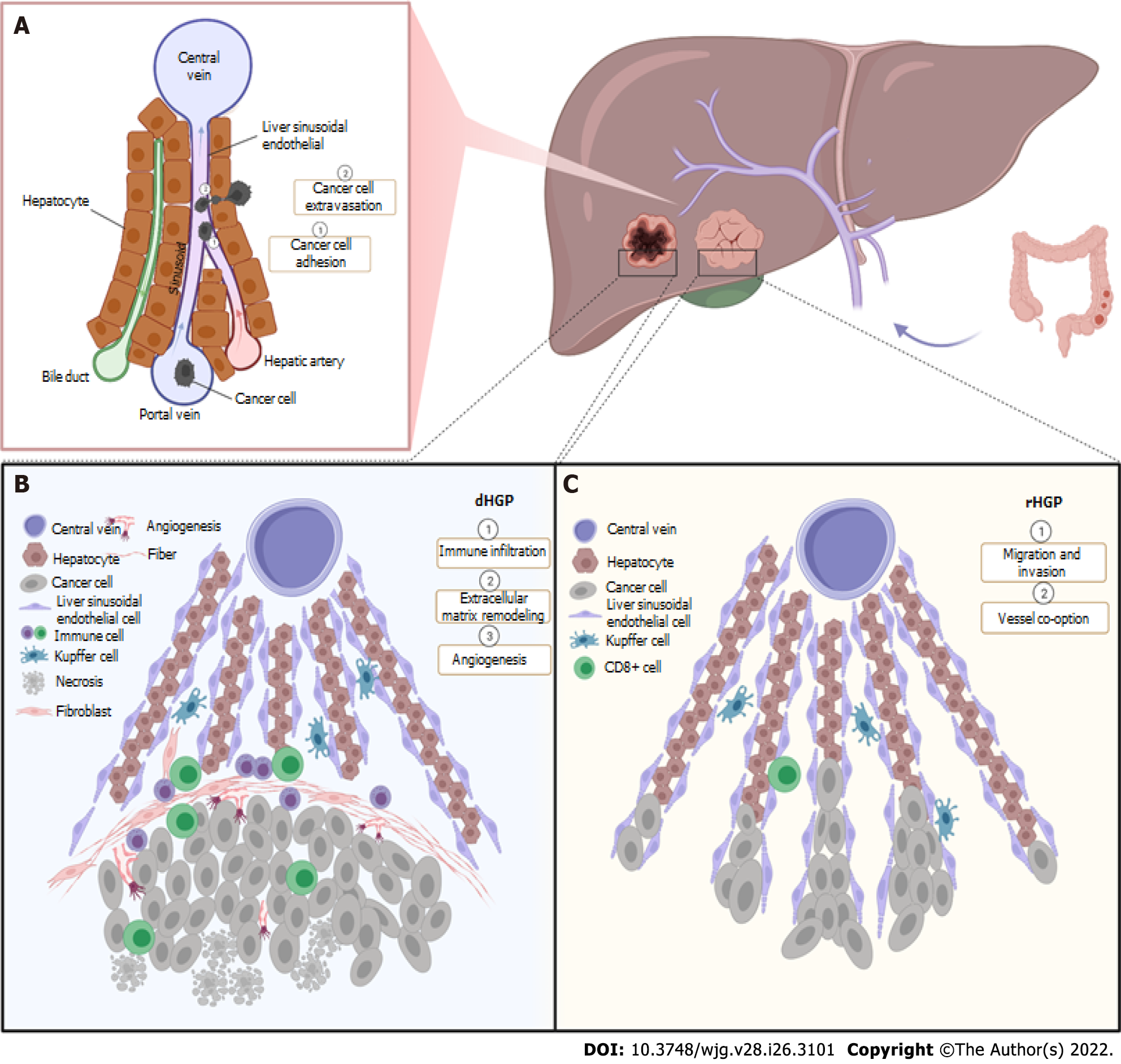Copyright
©The Author(s) 2022.
World J Gastroenterol. Jul 14, 2022; 28(26): 3101-3115
Published online Jul 14, 2022. doi: 10.3748/wjg.v28.i26.3101
Published online Jul 14, 2022. doi: 10.3748/wjg.v28.i26.3101
Figure 1 Formation and mechanism of desmoplastic histopathological growth pattern and replacement histopathological growth pattern.
A: Cancer cells originating from colorectal cancer arrive in the liver via portal vein, adhere to lumen of liver sinusoid and migrate with extravasation through fenestrae on liver sinusoidal endothelial cells (LSECs); B: There is a desmoplastic rim in interface of tumor with desmoplastic histopathological growth pattern, with tumor cells destroying liver plate, causing immune infiltration and extracellular matrix remodeling induced by activated fibroblasts and deposited fiber. Both angiogenesis and necrosis are presented in the tumor; C: In replacement histopathological growth pattern, tumor cells with highly migration and invasion replace hepatocytes and co-opt LSECs but without disturbing the liver structure and extensive immune infiltration. dHGP: Desmoplastic histopathological growth pattern; rHGP: Replacement histopathological growth pattern.
- Citation: Kong BT, Fan QS, Wang XM, Zhang Q, Zhang GL. Clinical implications and mechanism of histopathological growth pattern in colorectal cancer liver metastases. World J Gastroenterol 2022; 28(26): 3101-3115
- URL: https://www.wjgnet.com/1007-9327/full/v28/i26/3101.htm
- DOI: https://dx.doi.org/10.3748/wjg.v28.i26.3101









